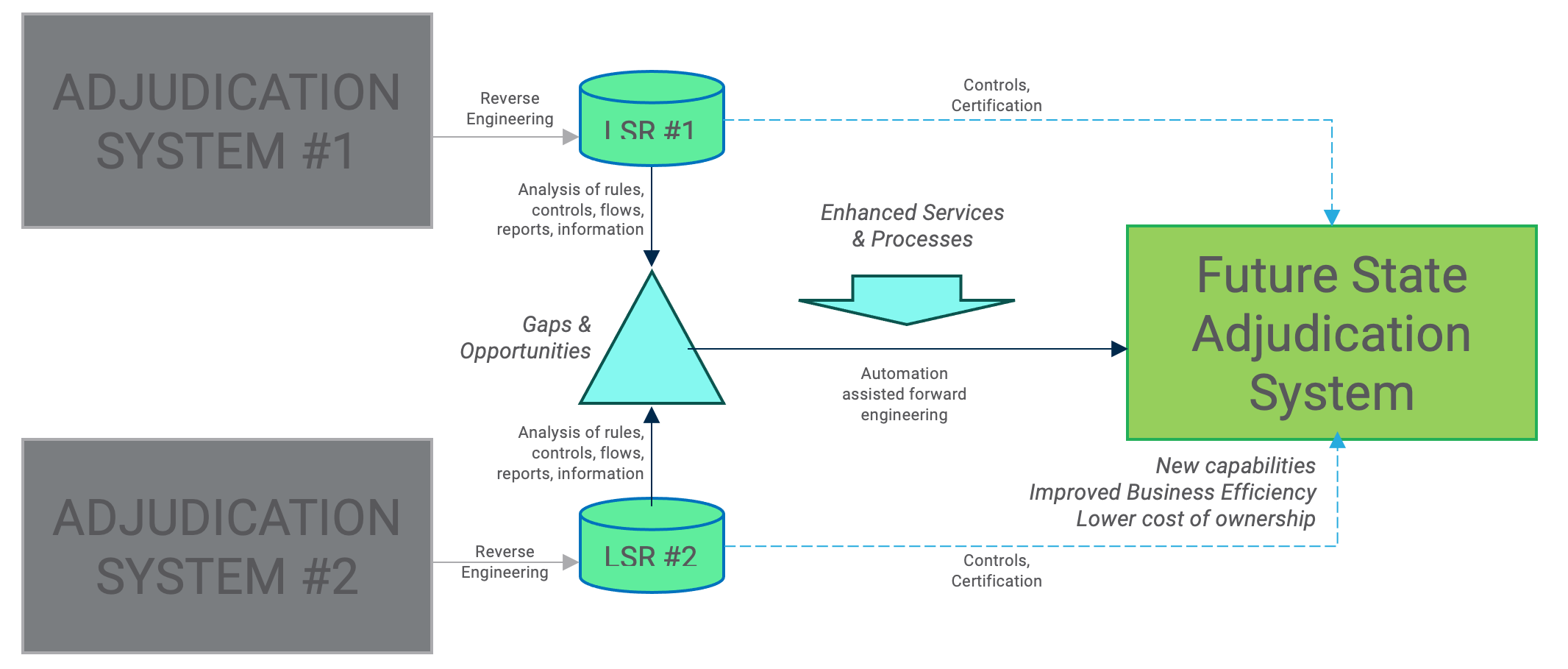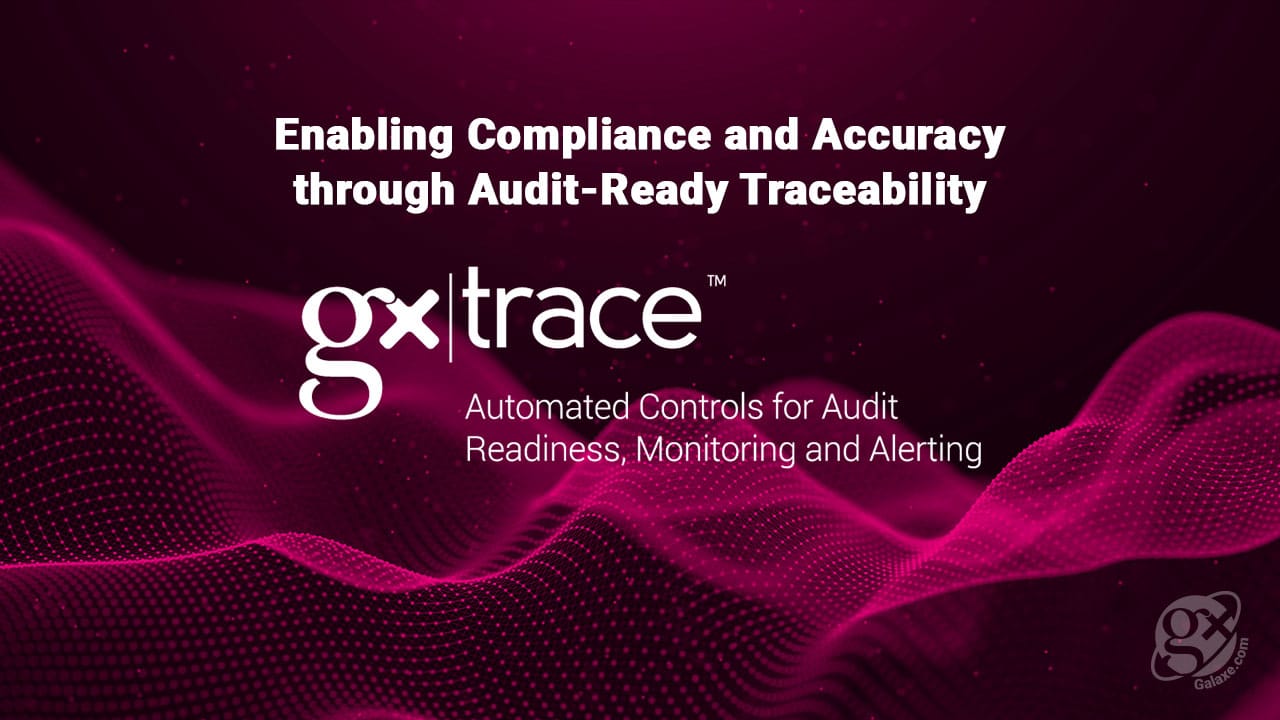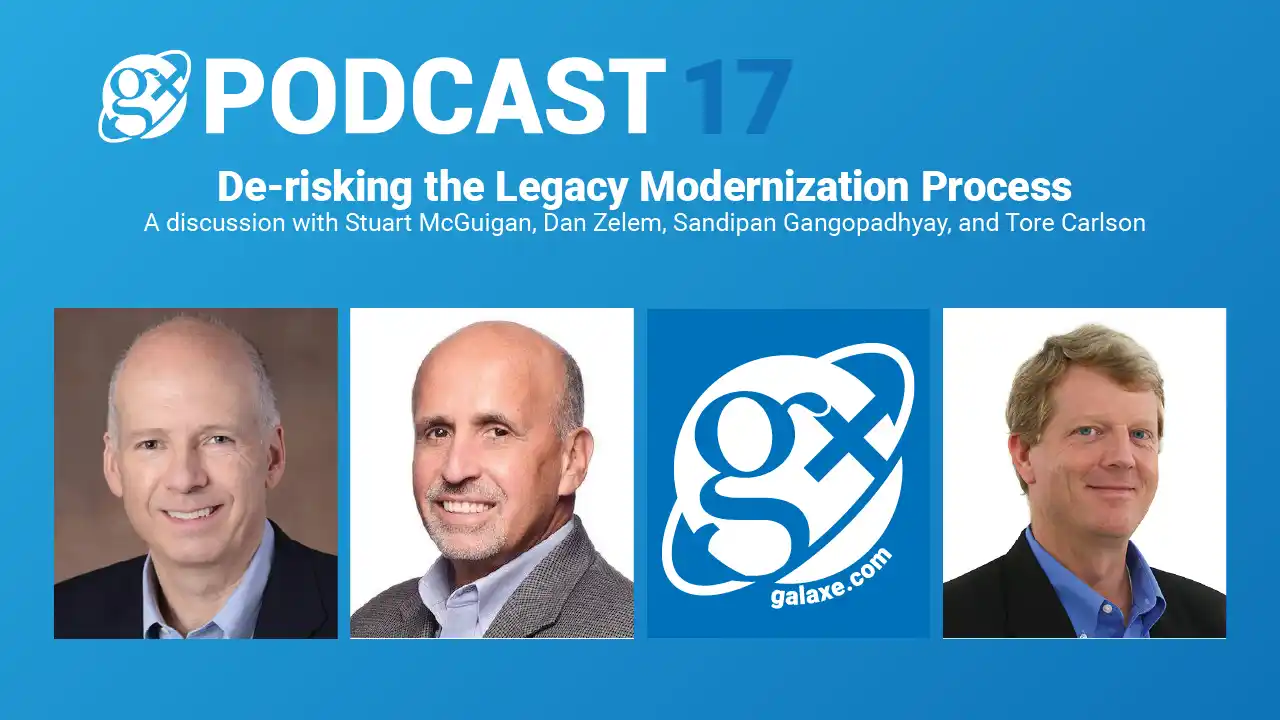The process of manual programming has never been a perfect or exact science, and the resulting defects that occur along the way have long plagued the software development lifecycle and are therefore perpetual in legacy systems. To combat this issue, testing phases and quality processes have to be deployed at every step in the process to ensure a defect-free output. One solution we have seen resolve this process in less time and with less effort is to use a set of transparent closed loop tools to eliminate defects and uncertainty, resulting in less manual effort and higher accuracy.
The key element to a transparent closed-loop system is the creation of a Logical Systems Repository (LSR). The repository illustrates a holistic view of a complex computer system as data that is available for modeling and analysis. Since this data is compiled in easily readable formats, it is also useful in other software development life cycle approaches. The LSR makes complex systems easily understandable, essentially reducing complexity which drives higher success in IT projects. We can provide clear decision points to business leaders so that they understand the impact of those decisions ahead of time, say while combining different business processes during a merger or implementing a new service product.
Using data from the LSR, it is possible to implement automation that can then be used to drive application development and enable migrations from legacy systems. Manual efforts on large and complex IT migration projects are costly and often not successful. A key benefit to the automated approach we have seen is that the system can handle large and complex projects with more accuracy and success than the traditional manual approach.
Based on this approach, a software delivery factory can be implemented that supports automated, repeatable, and controls-driven processes resulting in precisely designed and delivered systems. For example, the pharmacy benefits industry has seen key adjudication systems (see figure below) with tens of millions of lines of code consolidated and modernized with a complete elimination of member and patient impact using this approach time and again.

This automated approach using an LSR is now more relevant than ever. Most large organizations have decades of technical debt that has been acquired through the normal process of age, expansion, and acquisition. The resulting complexity from this process drags on efficiency and can severely reduce effectiveness. A large amount of technical debt requires more and more time, energy, and effort to maintain resulting in higher costs and slower speed to delivery.
There are many benefits to implementing this automated approach in managing and migrating legacy systems and technical debt. The LSR provides the data in logical groupings for a full assessment and identification of the complex computer system, allowing for complete traceability to account for all business rules and rationalization of the future system and data stores. This automated system also boosts the productivity and effectiveness of SMEs while accurately forecasting effort and time in addition to resource requirements. The accurate data creates complete test coverage for a high degree of accuracy. The future state system is optimized for improved controls and lower total cost of ownership
With these new automation methodologies, it is possible for organizations to migrate off of legacy systems and reduce their amount of technical debt with significantly lower risk and cost: lifecycle times are significantly shortened, manual effort is replaced, and control of the system is regained. There is incremental value in describing a complex computer system in an LSR. A deep analysis of the information in the LSR can lead to the discovery and remedy of issues in underlying systems. This automated approach effectively combats the effects of increased complexity and legacy technical debt and provides actual and reliable predictability to plan for the future.
Authors
- Sandipan Gangopadhyay, CGEIT, President and COO, GalaxE.Solutions, Inc.
- Stuart M McGuigan, previously CIO of the US Department of State, Johnson & Johnson and CVS Health
Related Content
Read the full article: Working Toward a White Box Approach: Transforming Complex Legacy Enterprise Applications on the ISACA Journal.








